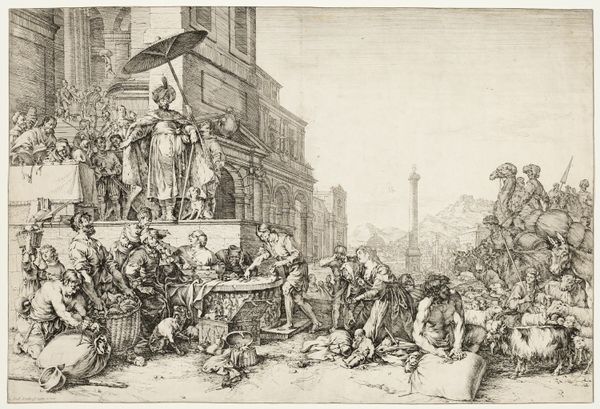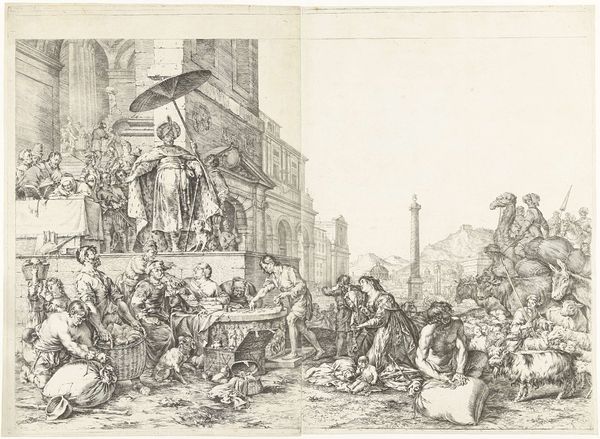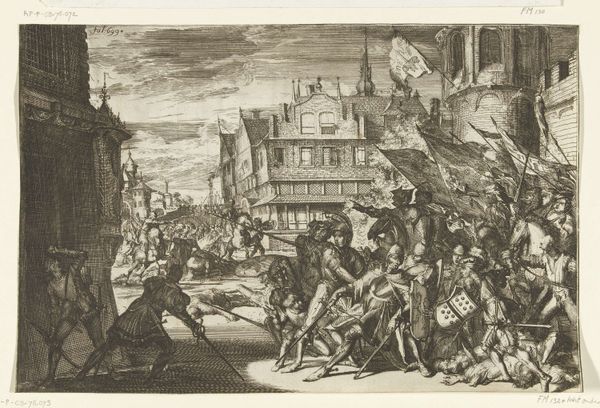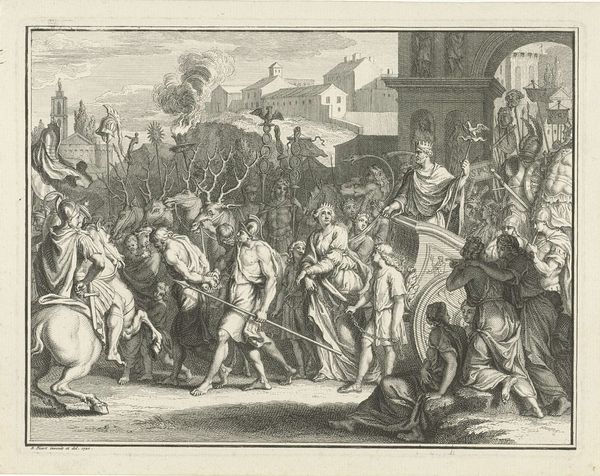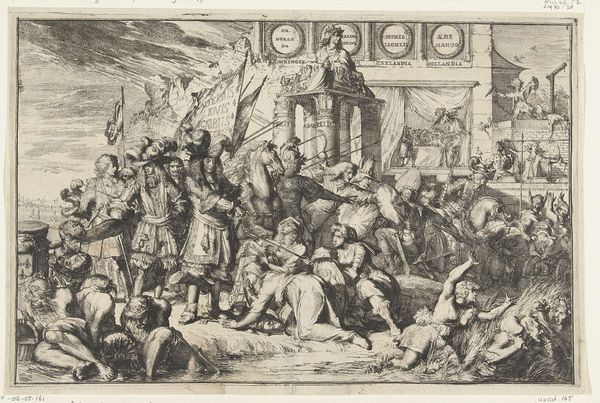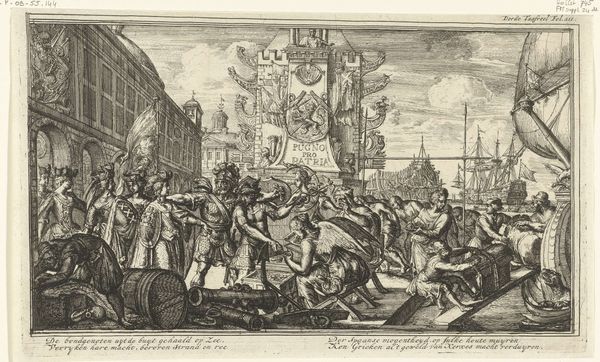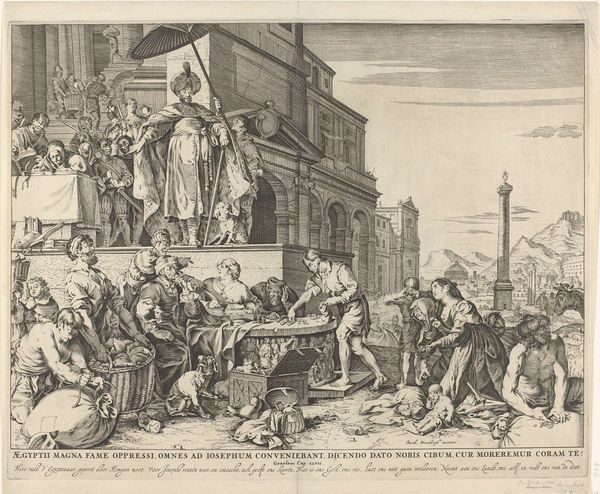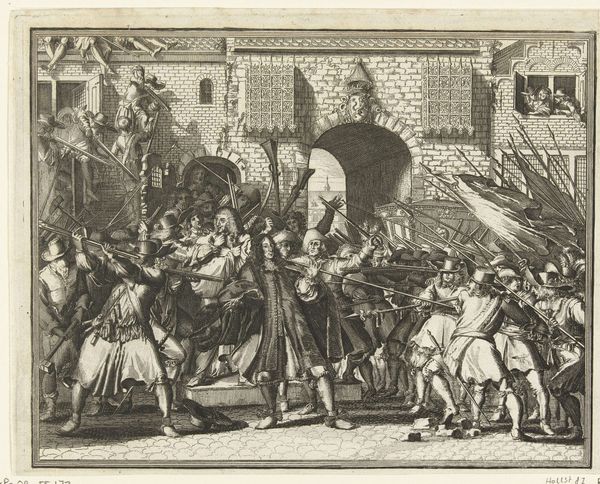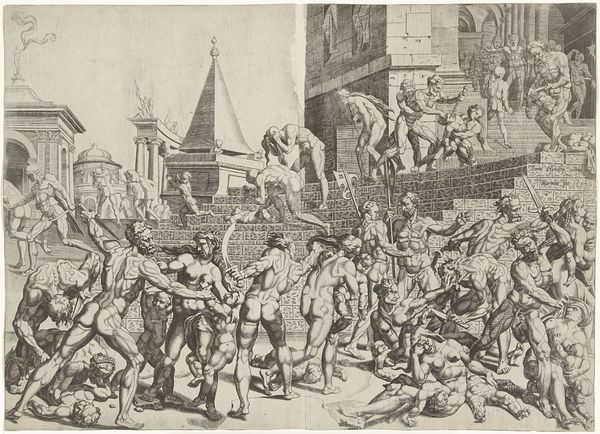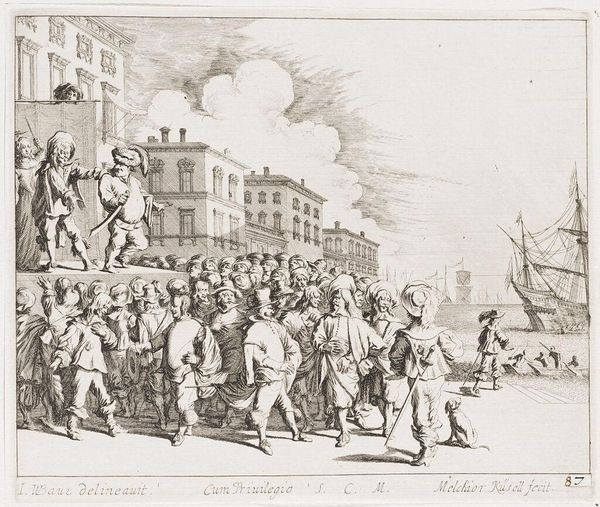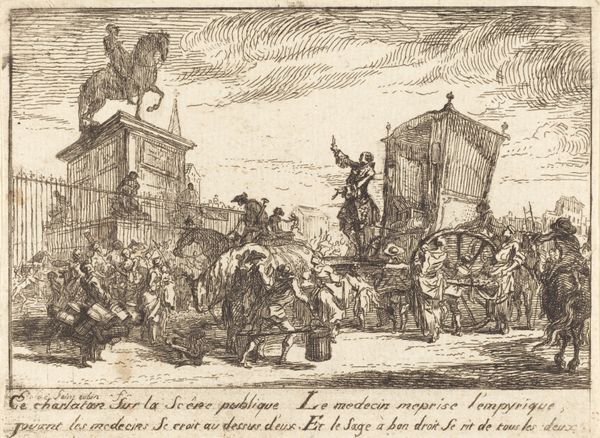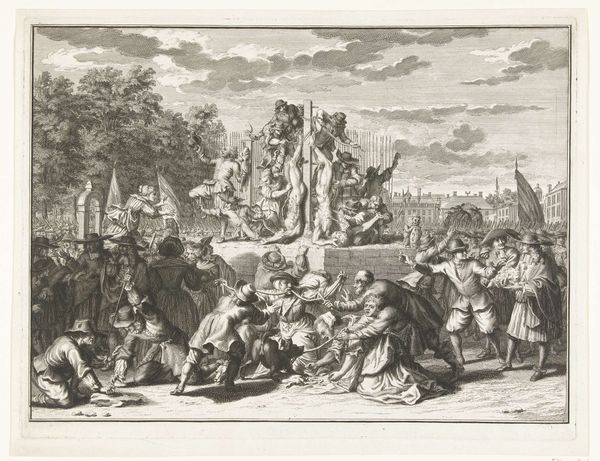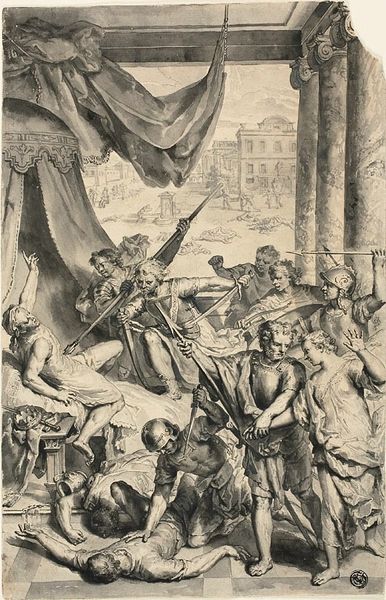
print, engraving
#
baroque
# print
#
pen sketch
#
figuration
#
line
#
genre-painting
#
history-painting
#
engraving
#
realism
Dimensions: height 476 mm, width 700 mm
Copyright: Rijks Museum: Open Domain
Editor: This is "Joseph Distributing Grain in Egypt," a print made by Jan de Bisschop sometime between 1638 and 1671, currently housed at the Rijksmuseum. There is such incredible detail for what seems to be a rather mass-produced object. What aspects of the printmaking process stand out to you? Curator: This work reveals much about the commodification of religious narratives in the 17th century. Note how the engraving technique, likely etching here, allows for relatively quick reproduction. Consider the economics – how many prints like this needed to be sold to make it a worthwhile enterprise? Editor: That’s fascinating. I hadn’t considered the market forces at play. How do the materials influence our understanding of the artwork? Curator: Absolutely. The accessibility of printmaking materials, the paper and the ink, alongside the artist's skill allowed religious narratives to be disseminated amongst a wider audience. It democratizes, in a way, the visual consumption of power and the Church. Look closely, and consider the social ramifications. Who would have purchased this print and why? Editor: Would this be seen as "high art"? The engraving appears quite detailed, yet the ability to reproduce it diminishes its singularity… Curator: That’s the central tension! Does its reproducible nature undermine its artistic value? Or does it democratize art production and accessibility? Think of it within its historical moment: what are the competing forces acting on notions of artistic value, considering patronage, craft, and the growing merchant class? The print medium really embodies this. Editor: So by examining the print itself, the paper, the ink, and the social context, we can better understand its impact… it opens up a whole new avenue for interpreting art! Thanks for the insight. Curator: Exactly! Always consider the physical creation and social impact – it unlocks a wealth of understanding beyond the image itself.
Comments
No comments
Be the first to comment and join the conversation on the ultimate creative platform.
